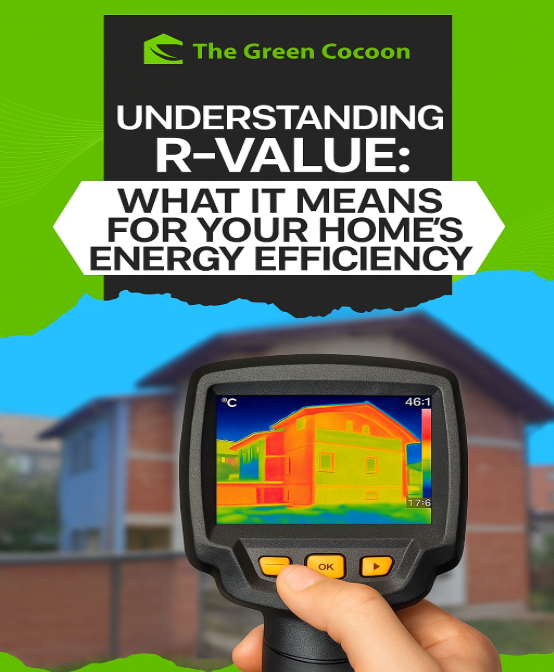It’s crucial to have a proper understanding of the R-value of your home. It will help to lower the energy bills and keep your home in excellent condition. The R-value details how much thermal resistance an insulation material possesses and how well it resists the transfer of heat. R-value is a term used to rate and measure the ability of the material to resist heat flow. This is said in terms of how fast the material would allow heat flow to either enter a house during warm weather or leave during cold weather.
The closed cell spray Foam insulation is considered one of the most typical types of spray foam insulation. The highly efficient reduction in heat transfer provided by this type of insulation results in energy savings.
Types of Insulation and Their R-Values
Choosing closed cell spray foam insulation is important to gain the optimum R-value for your home. A few common insulation types are compared here:
- Closed Cell Spray Foam Insulation: It provides air seals and thermal resistance. The R-value is relatively high, somewhere between R-6 and R-7 per inch. Closed cell spray foam insulation is recommended when both insulation and structural support are required. It also performs exceptionally well as a moisture barrier.
- Open Cell Foam Insulation: Being less dense than closed cell spray foam insulation, it offers lower R-values at lower costs, ranging from R-3.5 to R-4 per inch. It is most suitable since it assists in sound damping and air permeability.
- Fiberglass Insulation: The most frequently used insulation type by contractors in homes, fiberglass batting or loose-fill insulation has an R-value of roughly R-2.9 to R-3.8 per inch, depending on the thickness of the insulation. It performs well but requires additional air sealing for optimal efficiency.
- Cellulose Insulation: Because it is mainly made of recycled paper, it offers an R-value of around R-3.1 to R-3.7 per inch. It is treated with fire retardants and is used for attic and wall insulation.
Why R-Value Matters for Energy Efficiency
An R-value is an index of insulation and energy efficiency. The greater the R-value, the less one pays for bills and has a higher living comfort. If insulation resists heat transfer effectively, less stress is placed on heating and cooling equipment, thereby prolonging their life and providing better-quality air.
Energy loss is created by insufficient insulation; this loss produces drafts and cold spots. An understanding of R-values and their advantages can help you make better decisions to enhance energy performance in your home.
Picking the Right Option
If you are thinking about home insulation contractors, there are many considerations like budget, insulation needs, and home layout. Here are some tips about choosing insulation:
- Engage Local Insulation Contractors: Get in touch with professional home insulation contractors, they will inspect your home and recommend what types of insulation, taking into account R-values and your needs. They can answer any building codes and energy efficiency questions you may have.
- R-value versus Weather Conditions: If you reside in a colder region, it is worth investing in something that has a higher R-value, like closed cell spray insulation, for energy savings. Milder climates may instead benefit from combinations of different insulation types.
- Assess Your Needs: Different rooms have different needs. Insulation should fit specific needs. For instance, where sound absorption occurs, open cell foam insulation is used.
Energy Efficiency in Your Home
If your goal is to plan on making your home energy-efficient, you should opt for air sealing. This is a method where you apply sealant to keep unwanted drafts and energy losses at bay. The following are some improvements in air sealing:
- Upgrade to Closed Cell Spray Foam Insulation: This type of insulation provides a high R-value and acts as both an insulator and air barrier, helping to seal leaks and prevent energy loss.
- Re-insulate Older Areas: Over time, insulation can settle or become less effective. Re-insulating attics, basements, or crawl spaces can restore energy efficiency.
- Choose the Right R-Value for Your Climate: Homes in colder climates benefit from insulation with higher R-values. Our team can help you select the right materials based on your region and energy goals.
- Combine Insulation Types Strategically: In some cases, combining closed cell spray foam with other insulation materials can provide both thermal performance and sound dampening benefits.
Final Thoughts
Every person aiming to achieve energy efficiency in their home should understand R-value. A house that is well insulated well will lower energy bills, offer comfort, and be healthier to live in. Whether you go with closed cell insulation for better thermal performance or open cell foam to help with sound control, choosing the right insulation makes a big difference in your home’s comfort and efficiency.
Work on the energy efficiency of your home, Call the Green Cocoon. Their expert team of local insulation contractors can help come up with plans for insulation that best suits your needs. So don’t wait; begin your journey to an energy-efficient home!






